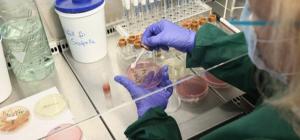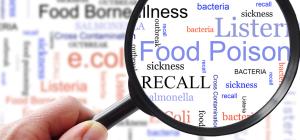
Food resources

Public health is affected by the food choices people make, the quality and quantity of food available, and the ways food is produced. The modernization of food systems has resulted in complex environments in which food is produced, processed, distributed, and ultimately disposed. Land use planning and retail environments shape how and where people grow, buy, prepare, and eat food. Contaminated soil, water, or air can introduce toxins such as heavy metals, persistent organic pollutants, and agricultural chemicals into the food supply. Social, cultural, and economic factors influence food-related decisions from the individual to the international level.
Access to safe and nutritious food is essential for a healthy population. Whether food is prepared by a large-scale food manufacturer, at a restaurant, or at home, many factors from farm to fork can influence the quality and safety of food. Each year, lapses in food safety contribute to an estimated 4 million episodes of foodborne illness in Canada. While food safety is an important part of food security, initiatives aimed at improving food security can also introduce particular challenges to ensuring food safety. Food security exists when everyone has dignified access to enough safe, nutritious, and appropriate food that has been produced through a just and sustainable system. Food insecurity can lead to hunger or poor nutritional health, and is associated with increased risk for chronic disease, obesity, and learning or mental health challenges.
Public health strategies that include health promotion, supportive environments, risk communication, surveillance, and regulation at federal, provincial/territorial, and local levels aim to create a healthier food system.
The NCCEH has produced numerous resources related to food, including:
Evidence reviews:
- Risk Factors and Surveillance Systems for Foodborne Illness Outbreaks in Canada
- Review of Food Safety Interventions and Evaluation in Food Service Establishments
- Perceived and Potential Human Health Risks Associated with Consumption of Genetically Modified Animals
- Disinfectants and Sanitizers for Use on Food Contact Surfaces
- Nanotechnology: A Review of Exposure, Health Risks and Recent Regulatory Developments
- Impact of Home Preparation and Cooking Methods on Levels of Dioxin and Dioxin-Like Compounds in Foods
- Does Eating Organic Food Reduce Pesticide Exposures and Health Risks?
- Church/Community Suppers: What is the Evidence for Risk of Food-borne Illness?
- Comparison of the prevalence of bacterial enteropathogens, potentially zoonotic bacteria and bacterial resistance to antimicrobials in organic and conventional poultry, swine and beef production
- Safe Preparation and Storage of Aboriginal Traditional/Country Foods
Practice Scenarios
- Paralytic Shellfish Poisoning
- Pepper Spray in the Indoor Environment and in the Vicinity of Food Products and Preparation Surfaces
Workshops & Presentations:
- Food Safety, Food Security, and the Public Health Inspector
- Taking a Big Picture Approach in Environmental Public Health: Public Health Inspectors and Food Security Interventions
- Food Safety Interventions: Do we know what works?
- Food Safety Interventions: Disclosure
- Raw Milk: Clarifying the Debate and Moving Towards Healthier Public Policy
- Bridging the Evidence-Practice Divide: The Science and Policy of Bisphenol-A
- Efficacy of some sanitizers or alternatives on food contact surfaces?
- Specified Risk Material: Public Health Implications
- Food Security 101: What is Food Security and What Does It Have To Do With Food Protection?
Guidelines
This list is not intended to be exhaustive. Omission of a resource does not preclude it from having value.








